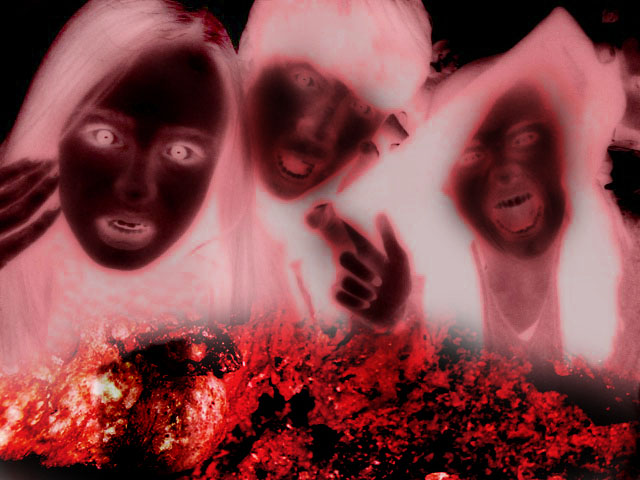Sunday, 17 January 2010
Psycho (1960)
Psycho is a 1960 american horror film directed by Alfred Hitchcock, based on the screenplay by Joseph Stefano. Psycho is about the encounter between a secretary, Janet Leigh, who is in hiding at a motel after embezzling from her employer, and the motels owner, Norman Bates, and the aftermath of the encounter.
The film is notorious for its famous 'Shower Scene' where the murder of Janet Leigh's character actually occurs. The Shower scene is one of the most famous scenes in cinema history and could be stated as being the revolutionary scene to change the horror film industry.
The scene begins in a bathroom, the bathroom is spotless and white, possibly showing the innocence and purity of the protagonist. Furthermore due to the film being black and white, in my opinion I feel this further enhances her purity as the colours seem to be more pure. However when we see the antagonists silhouette through the shower curtain we can immediately see the contrast between the protagonists purity and the antagonists impurity.
The protagonist enhances her purity and fundementally her vulnerability when she removes her dressing gown to enter the shower. This portrays to the audience that danger is looming. Whilst the protagonist showers we see a series of different camera angles as she enjoys her shower. But then the camera angle changes and remains there as we see the antagonist vaguely enter the room, meanwhile the audience are looking through a shower curtain so the antagonists identity remains unknown therefore increasing the tension. The antagonist then rips open the shower curtain and begins his attack.
The murder weapon is a knife which conforms to the iconic conventions of horror films as it portrays a more brutal and painful death. Once the protagonist has been attacked we see a close up of her hand run down the tiles on the wall as her life slowly fades away. But she then grabs on to the shower curtain with a last gasp of strength then the shower curtain falls and with the shower curtain the protagonists body falls to the floor.
Throughout the scene lots of jump cuts are used to build up tension. There are also a vast amount of close ups of the protagonist. These are possibly used to show her emotion and emphasise her innocence and purity. The most notorious shot of the whole scene is where the camera is directed at the protagonist but the framing is interesting and she is not placed in the centre, but instead is placed slightly to the right. This allows us to see over her shoulder and see the antogonist enter the room. This builds up a huge amount of tension as the audience can see what is going to happen before the protagonist can.
Subscribe to:
Post Comments (Atom)


No comments:
Post a Comment